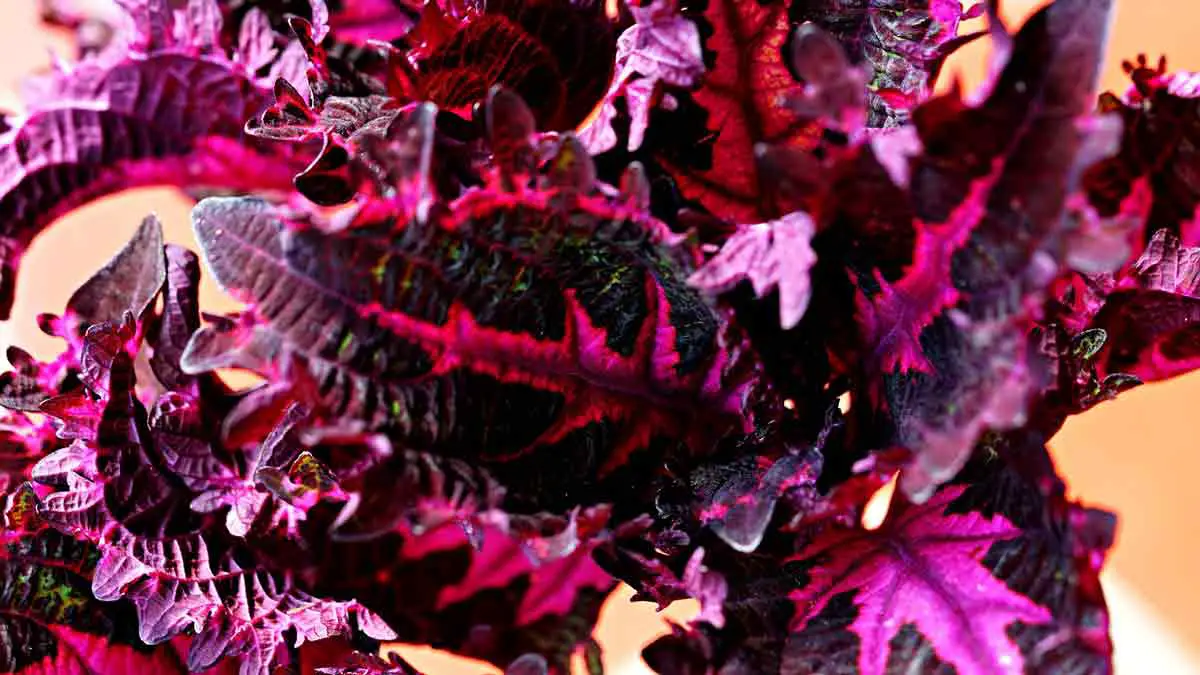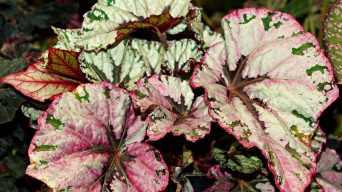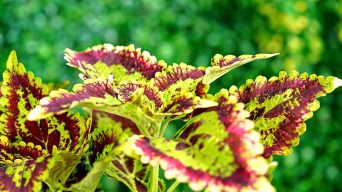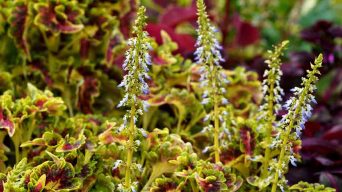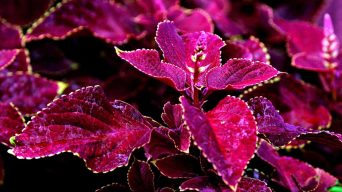Root rot in Coleus plants is caused by overwatering or poorly draining soil, resulting in yellow or brown leaves, decaying odor, stunted growth, mold, and wilting or curling leaves. To treat it, inspect roots, remove affected areas, and repot. Prevent root rot by avoiding overwatering and ensuring proper soil drainage.
Coleus plants are a popular choice for adding a pop of color and texture to your home or garden.
With their vibrant colors, shapes, and sizes, it’s no wonder why they’ve become so popular!
Unfortunately, coleus plants can be prone to root rot—a fungal infection that can cause extensive damage to the plant.
This article will discuss the signs and symptoms of coleus root rot, its causes, and how to treat it.
Causes of Coleus Root Rot
Coleus root rot is a common problem for gardeners.
There are several causes of this condition, but the most common ones include overwatering, poor soil and drainage, as well as fungal infection, and overfertilization.
Overwatering
When coleus plants are overwatered, their roots become waterlogged and suffer from oxygen deprivation. This can lead to the death of root cells and cause the appearance of root rot.
To avoid this problem, it is important to establish a consistent watering schedule for your coleus plants. Make sure that you only water when the soil is dry, and never leave the soil soggy.
Poor Soil and Drainage
Root rot can quickly develop due to constant wetness if you are growing your coleus plants in a poorly-drained potting mix. It is important to use a well-draining potting mix rich in organic matter for optimal growth of your coleus plants.
To prevent root rot, it is also important to make sure that the potting mix is not overly compacted. Loosening the soil can help improve drainage and prevent the roots from becoming waterlogged.
It’s also important to ensure that the pot has adequate drainage holes so that excess water can easily drain out.
Fungal Infection
Fungal infection is one of the primary causes of coleus root rot. Fungi such as Pythium, Phytophthora, and Rhizoctonia affect coleus plants by causing root decay or rotting.
Indications of a fungal infection include leaves that appear wilted, foliage turning yellowish, and a hampered or stunted growth.
These fungi love wet soil and can quickly spread through water or dampness in poorly drained soils.
To prevent this from happening, it is important to make sure your soil is well-drained and that you are not overwatering your plant.
If you already see signs of infection, you should remove the affected portions of the plant and apply a fungicide to prevent further spread.
Overfertilization
Overfertilization can also cause root rot in coleus plants.
Too much fertilizer can lead to salt and mineral build-up in the soil, which causes the roots to suffer from nutrient burn and die off.
If you want to fertilize your coleus plants, it is important to use low-strength fertilizer only once or twice a month during the growing season, and never more than that.
Additionally, make sure that you water the plant thoroughly after fertilizing, as this helps wash away any excess nutrients that might be harmful to the plant’s roots.
Symptoms of Coleus Root Rot
When caring for your coleus plant, it’s important to know the signs and symptoms of root rot. If left untreated, your coleus can suffer extensive damage.
Here are some common symptoms of coleus root rot to look out for:
- Yellow or Brown Leaves. One of the first signs that your coleus is suffering from root rot is if its leaves turn yellow or brown. The discoloration is usually caused by a lack of water and nutrients due to the rotting roots.
- Rotten Smell from the Base of the Plant. If your coleus is infected with root rot, it will release a distinct rotten smell at its base. This smell might be faint or intense, depending on the severity of the infection.
- Slow or Stunted Growth. Another symptom of root rot in coleus plants is slow, stunted growth compared to other healthy plants in your garden. With sufficient water and care, most coleus plants can grow quickly. Still, their growth will be hindered significantly if they suffer from root rot.
- Presence of Mold. If you see any white, gray, or black mold on the soil or around the base of your coleus, it’s a sign that the roots cannot absorb water and the soil is becoming waterlogged.
- Curly, Droopy, or Wilting Leaves. If the leaves of your coleus are starting to curl up, droop down, or wilt, the roots are likely rotting, and the plant isn’t getting enough water or nutrients.
- Dark, Soft Roots. If you see any dark, mushy roots on your coleus, it is a clear sign of root rot. The dark coloration is caused by the fungi that have invaded the root system.
Confirming Root Rot in Coleus Plants
It’s important to identify root rot in your Coleus plants as soon as possible so you don’t end up with an unexpected disaster on your hands.
The good news is that you can take a few simple steps to confirm the presence of root rot and start treating it before it’s too late.
Inspection of Symptoms and Causes
The first step is to inspect the symptoms and causes of root rot to determine if it is indeed present.
Look for discoloration in the coleus leaves, wilting or yellowing of the foliage, and mushy stems.
You may also notice a foul odor coming from the roots or soil. If you detect any of these signs, root rot is likely present.
Examining Roots
The next step is to examine the plant’s roots.
Pull up the plant gently and inspect them for softness and discoloration, which indicate root damage caused by rot.
Once you have confirmed that there are signs of root rot present, you will need to take action immediately to save your Coleus plants before it’s too late!
Treatment of Root Rot in Coleus Plants
Once root rot has been identified in your Coleus plants, it is important to take steps to treat the infection as quickly as possible.
The most effective way to do this is by repotting the plant in fresh soil and giving it plenty of water.
1. Uprooting the Plant and Cleaning Roots
The first step when treating root rot is to uproot the plant and check out its roots carefully.
Using sterilized scissors, trim away any visibly damaged or decayed parts of the root system. You can tell a part of the root is infected by its dark or slimy appearance.
For a thorough clean, run the roots under running water to remove any excess dirt and debris. Do not expose them to too much sunlight, which can cause further damage.
2. Using Hydrogen Peroxide, Fungicide, and Rooting Hormone
Once you have cleaned off the roots, treat them with hydrogen peroxide solution to help disinfect them. This will reduce the spread of infection and promote healthy growth.
You may also want to apply a fungicide, such as neem oil, which effectively prevents fungal infections from taking hold again in the future.
3. Placing the Plant in a New Pot
Once the roots have been disinfected and treated, it is time to put the Coleus plant in a new pot. Make sure you choose one that is slightly larger than the previous one, so there is plenty of room for new healthy root growth.
Make sure the new pot has good drainage, as this will help prevent root rot from occurring in the future.
Fill the pot with a fresh potting soil and carefully place the plant in it.
4. Don’t Water for a Few Days
After transplanting the Coleus plant into its new pot, it is important not to water it for a few days. This will allow the roots time to settle in and re-establish themselves without being further disturbed by frequent watering.
After a few days, you can start to water the plant again, but be sure to give it only moderate amounts of water. Keep an eye on the soil moisture levels and water only when necessary.
5. Waiting for 2 Weeks for Roots to Bind
It takes about two weeks for the roots of a Coleus plant to bind with the new soil, so it’s important not to overwater during this time.
Give the plant just enough water to keep its soil moist but not wet. Once the two-week mark has passed, you can resume your regular watering routine.
With these steps, you should be able to treat root rot in your Coleus plants successfully and ensure that healthy growth continues again soon.
How To Prevent Root Rot In Coleus Plants
While root rot can be treated, it is always best to prevent it from occurring in the first place.
Here are some simple steps you can take to ensure your Coleus plants stay healthy and happy:
- Make sure your Coleus plants are planted in well-draining soil with plenty of organic material and in a pot with drainage holes.
- Water regularly, but don’t allow the soil to become soggy or saturated. Allow the top two inches of soil to dry out between watering sessions.
- Avoid overhead watering, as this can promote root rot and fungal growth. Instead, water at the base of the plant using a drip system or a soaker hose.
- Prune away any dead or dying leaves and stems, as these can harbor spores that cause root rot. Then discard them in an area away from your Coleus plants to prevent contamination.
- If you notice unusual discoloration on your coleus, it’s best to take a sample of the plant and bring it to your local garden center for diagnosis.
- Avoid overcrowding your Coleus plants, as this can lead to increased humidity and an increased risk of root rot.
- If possible, avoid planting coleus in shady areas or overly moist soil that does not drain well.
- Avoid overfertilization, as too much fertilizer can burn the roots and increase the risk of root rot.
- Repot your Coleus plants every few years to ensure the soil remains fresh and healthy.
- Keep your gardening area clean and tidy to prevent the spread of diseases and pests.
Final Thoughts
Root rot is a severe issue that should not be taken lightly.
Early detection and prevention are key to helping your coleus plants remain healthy and robust.
If you think your coleus plants are suffering from root rot, be sure to take action right away.
Removing the affected plant and treating the soil can help prevent the spread of this disease.
With proper care and attention, your coleus will remain a beautiful addition to your home or garden for years to come!

